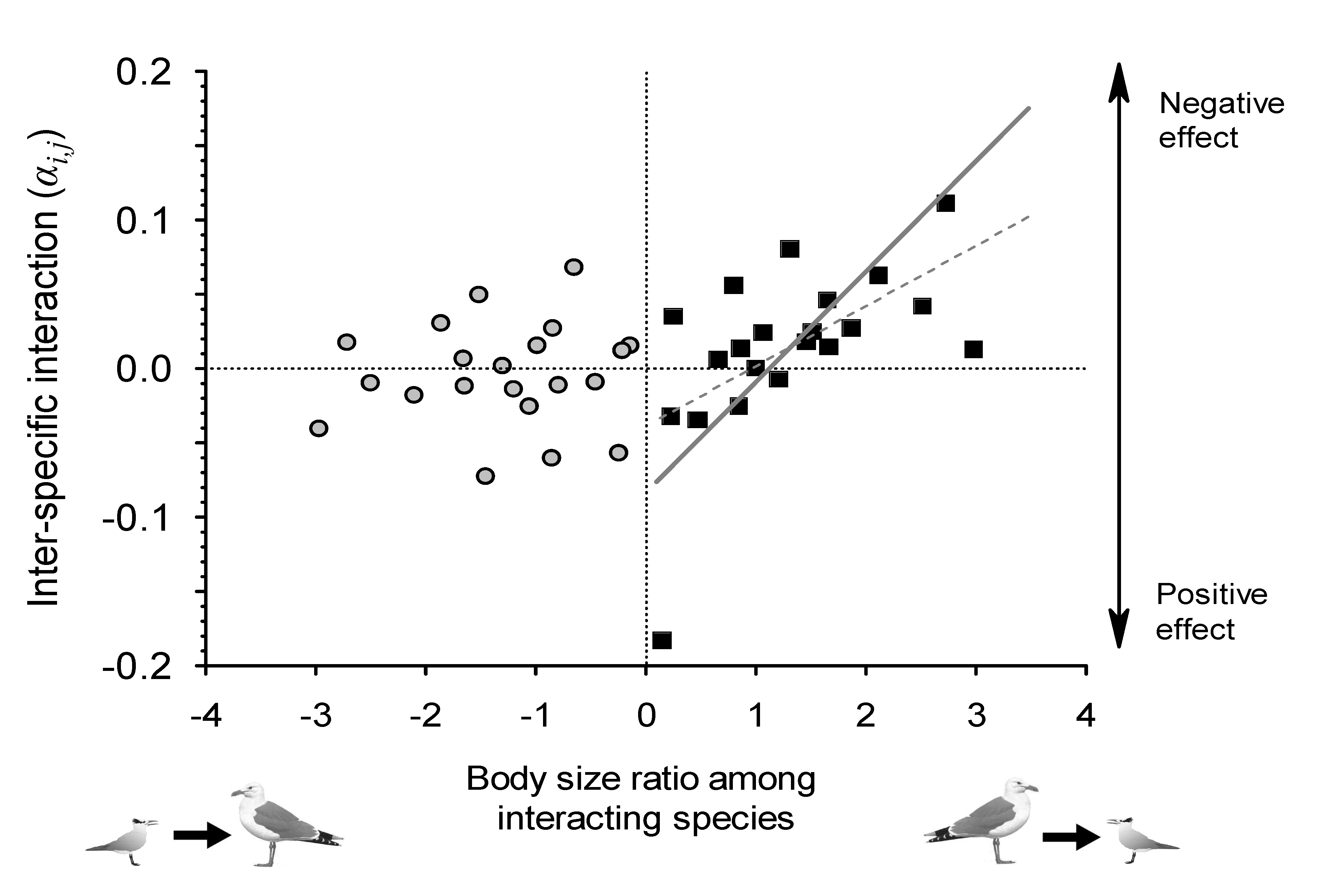Important links
Abstract
Theoretical and empirical evidence suggests that body size is a major life-history trait impacting on the structure and functioning of complex food webs. However, long-term analyses of size-dependent interactions within simpler network modules, for instance, competitive guilds, are scant. Here, we model the assembly dynamics of the largest breeding seabird community in the Mediterranean basin during the last 30 years. This unique data set allowed us to test, through a ‘‘natural experiment,’’ whether body size drove the assembly and dynamics of an ecological guild growing from very low numbers after habitat protection. Although environmental stochasticity accounted for most of community variability, the population variance explained by interspecific interactions, albeit small, decreased sharply with increasing body size. Since we found a demographic gradient along a body size continuum, in which population density and stability increase with increasing body size, the numerical effects of interspecific interactions were proportionally higher on smaller species than on larger ones. Moreover, we found that the per capita interaction coefficients were larger the higher the size ratio among competing species, but only for the set of interactions in which the species exerting the effect was greater. This provides empirical evidence for longterm asymmetric interspecific competition, which ultimately prompted the local extinction of two small species during the study period. During the assembly process stochastic predation by generalist carnivores further triggered community reorganizations and global decays in population synchrony, which disrupted the pattern of interspecific interactions. These results suggest that the major patterns detected in complex food webs can hold as well for simpler sub-modules of these networks involving non-trophic interactions, and highlight the shifting ecological processes impacting on assembling vs. asymptotic communities.
Important figure

Citation
@article{Almaraz2011,
title = {Size-Mediated Non-Trophic Interactions and Stochastic Predation Drive Assembly and Dynamics in a Seabird Community},
author = {Almaraz, Pablo and Oro, Daniel},
date = {2011-10},
journaltitle = {Ecology},
volume = {92},
number = {10},
pages = {1948--1958},
doi = {10.1890/11-0181.1}
}